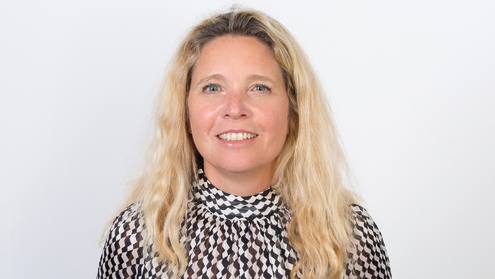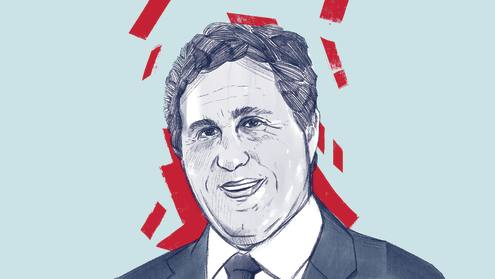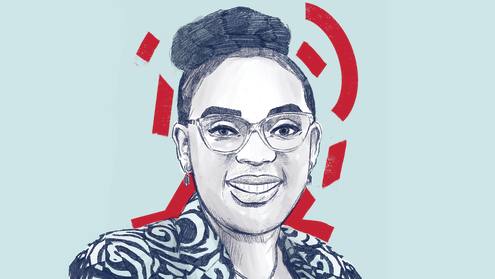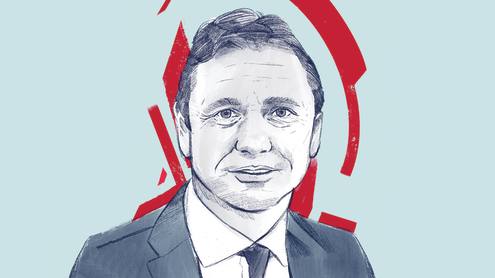Taking on a new job is always daunting, but even more so when the challenges confronting the global economy continue to mount. Just months into my term as the new president of the European Bank for Reconstruction and Development (EBRD), it is clear to me that the bank has an increasingly important role to play in trying to create the conditions for renewed and sustained growth in the countries where we operate. Our focus is on two regions that face strong economic headwinds, albeit for very different reasons. In a world of scarce money, the demand for our help is huge and balancing their needs is crucial.
For more than two decades, the EBRD has been operating in the former communist bloc. The bank was set up to ease and guide the economic transition from state control to the free market. We are a long way on from the fall of the Berlin Wall in 1989, but such change is a long and drawn-out process, remedying decades of under-investment and distorting state intervention in large parts of the economy. It would have been difficult enough even without the economic jolt of 2008 – a crisis which has revealed weaknesses in many of the 29 countries with which we are involved across a giant swathe of territory stretching from Romania and Montenegro in southern Europe through central and eastern Europe, Ukraine, Russia and central Asia, all the way to Mongolia on the Chinese border.
In the second half of 2012, we are taking on another region of the world which faces some of the problems adhered to above, as well as many others. We will be beginning investments in the Middle East and north Africa – or the southern and eastern Mediterranean as we call it – the countries where the winds of the Arab Spring have been blowing through, bringing hopes of a better political and economic future. In both of these regions, there is a need to develop the private sector further through investing in the small and medium-sized enterprises (SMEs) that are the drivers of both growth and jobs.
Looking at those two regions in more detail, we are not sanguine about the obstacles in our path. Four years on from the onset of the global economic crisis, southern, central and eastern Europe is feeling the growing force of a major downswing. What began as a mortgage crisis in the US 2007 soon struck the real economy in the form of a major credit crunch in large parts of the global economy, provoking a reversal the likes of which the world had not seen for generations – and today there remains a shadow over economic rejuvenation.
Eurozone spillover
Most recently, and to a large extent as a result of the 2007 crisis, the eurozone’s sovereign debt problems and the linked impact on the region’s banking sector is squeezing the EBRD region on two fronts. As growth becomes ever more constrained in the more economically advanced parts of the EU, so the market for eastern European goods and products is shrinking. At the same time, the efforts by Western banks to bring their balance sheets back to health is constricting the flow of bank funding, especially into those countries that are closest to and most inextricably linked to the financial sector on their western border. The tentacles of this eurozone crisis are reaching ever further east. Even in countries such as Russia, whose generous natural resources had previously shielded their economies, the impact is also being felt as growth slows and demand for energy resources and other commodities declines.
In this area, where the EBRD has been investing for two decades, countries are facing problems that, to some extent, are not of their own making. Many governments have continued to push ahead with a reform agenda and not shied away from making tough choices in order to strengthen their own economies. Those policy options have often had a very harsh impact on the people of those countries. Sacrifices have been made in order to continue the longer term path towards a more sustainable economic future.
The eurozone crisis is not helpful, either, to the emerging Arab democracies in the EBRD’s new region. They cannot look to a fragile EU as a potential source of economic growth as a way of compensating for the uncertainty in their own economies that has emerged during a period of political transition.
Investing for change
As president of the EBRD, I believe it is the duty of the international community to continue to support these economies and to make it clear to the people who have borne the brunt of the crisis, or who have decided that they want to pursue a brighter and more democratic future, that their efforts and sacrifices were not in vain and that a brighter future lies ahead.
Certainly the EBRD, together with other international financial institutions, will work tirelessly to that end. The EBRD does not invest for investment’s sake. It invests to make a lasting positive impact on the lives of people. We invest in changing lives.
It is for that reason that the EBRD places so much emphasis on investing in the private sector. We support the creation and the sustainable development of those SMEs that can become the bedrock of economies.
SMEs cannot flourish in a vacuum, though, and so the EBRD is helping to create effective infrastructures that support the movement of goods and produce an environment for successful commerce. That means working to create transport links, roads, ports and railways, both within the relevant countries and beyond, in order to nurture the development of regional trade. Energy efficiency also remains a key strategic priority, as that has the immediate tangible benefit of shoring up companies’ profit margins and making them more competitive on the international arena. The EBRD’s Sustainable Energy Initiative – promoting energy efficiency and the sustainable development of renewable sources of energy – now accounts for some 30% of our annual investments.
In all of the countries where we are investing, we need to look for and support a more balanced economic development. That means a better balance between sources of income, helping resource-heavy economies to diversify into new industries or to help raise the level of product sophistication. Financial balance is also a watchword. Many of our countries became heavily dependent on what initially seemed cheap sources of foreign borrowing at low rates of interest. Those loans became unaffordable as local currencies depreciated. It has therefore become crucial to help build up local sources of funding by the development of local capital markets that are capable of harnessing local savings and providing local funding. The EBRD is particularly active in this sphere.
Looking south
We are fortunate to be able to do this work at the same time as having the financial resources to begin assisting the emerging Arab democracies. Countries in the Middle East and north Africa are replicating the seismic political change that occurred in eastern Europe two decades earlier. Amid high unemployment, people are demanding a new vision for their lives. The international community has responded to this call for help and the EBRD specifically was asked by the G-8 and by the EU to become a key part of this response.
Perhaps an EBRD role in supporting emerging Arab democracies was not immediately obvious for a bank that had spent 20 years primarily engaged with former communist countries in the eastern part of Europe and the former Soviet Union. But while being keenly aware of the historical, cultural and demographic differences between the two regions, the EBRD’s shareholders quickly realised that the skills the EBRD had brought to bear in eastern Europe could effectively be applied in the southern and eastern Mediterranean area.
It was also clear that the aspirations of the people in this new region were the same as those that had been sought in the former communist east – freedom coupled with a more stable and sustainable economic outlook.
The EBRD is now actively preparing to engage in investment projects that will help achieve this goal, building on its experience from the past. In an area where youth unemployment is particularly high, the bank will seek to finance small enterprises that can support job creation. It will look to improve the quality of local services. It will aim to create more stable financial sectors. Its energy investments will seek to reduce waste and make energy supplies more secure. We have the resources to, eventually, invest some €2.5bn a year in our new region of activity. Each euro we put in attracts another two euros of investment from other sources. The total can make a substantive impact.
The EBRD has vowed to make this move into uncharted territory while not turning its back on the countries where it has traditionally invested. It is clear that there is still work to be done to narrow the gap between eastern and western Europe. But the EBRD has the support of its shareholders, the financial resources and the skills to make this transition. It also has the capacity to bring in the specific expertise it needs to meet the new challenge.
I was elected to the presidency of the EBRD at a time when the economic challenges have never been greater for our countries of operation. The EBRD can only help find the right solutions in concert with others – the countries we serve, the private sector and our partners in the international system. We will be doing just that.
Sir Suma Chakrabarti is president of the European Bank for Reconstruction and Development












